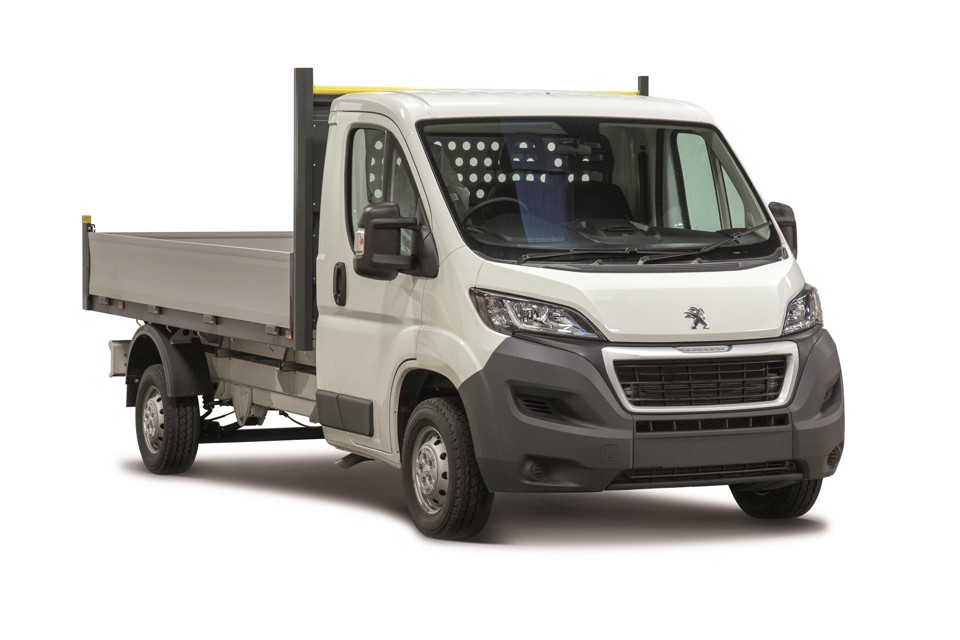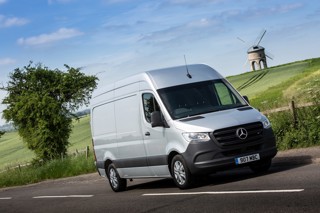Van manufacturers are confident a new emissions testing regime will not dent vehicle supply in the same way it impacted the new car market, last year.
However, with such a large number of light commercial vehicles (LCVs) being adapted for end-user fleets, it is vehicle conversions that are creating a different set of challenges.
The new, more accurate emissions test, the Worldwide harmonised Light vehicle Test Procedure (WLTP), began being phased in for vans two years ago.
All new car-derived vans (Class 1 up to 1,305kgs) have been tested under WLTP rules since September 2017, while all newly registered Class 1 vans have undergone the test since September 2018.
All new types of heavier vans (N1 Class 2, 1,305-1,760kgs, and Class 3 above 1,760kgs) have also had to be tested under WLTP since September, last year, while all newly registered vans in this category will have to be measured against WLTP from this September, with converted vehicles requiring their own individual WLTP CO2 value.
WLTP tested vehicles also have an ‘NEDC-b’ CO2 figure applied for tax purposes, similar to the NEDC-correlated figure used for cars. This figure will be used until April 2021, when WLTP values take effect for tax purposes.
Mike Hawes, chief executive of automotive trade body the Society of Motor Manufacturers and Traders (SMMT), acknowledged the potential for supply issues.
“Invariably, when you have a regulatory change it can lead to supply issues, especially when you have to re-test everything,” he said.
He added there is a “finite” number of approved vehicle testing facilities which, under normal circumstances, are operating at 80-90% capacity.
“When you’ve got to re-test models, you’re trying to force that through an industry with capacity limitations so it can lead to delays,” he said.
“We saw it with passenger cars last year, particularly for brands that have a broad model portfolio. The same could happen (with vans), but the model portfolio isn’t so broad. Everyone will try to avoid supply shortages, but it’s not always in your gift.”
Volkswagen announced late last year that it had invested €6 million (£5.4m) in an emissions testing facility at Hannover in Germany.
The facility has two test beds to approve the manufacturer’s vehicles, as well as checking models in production on a continuous basis.
A UK spokesman said the manufacturer has been working with the factory, its van network and end-user fleets to understand their requirements and to allow it to “minimise or eliminate issues”.
“While there will be some production gaps we are confident we can manage a relatively smooth transition for customers,” he said.
Most manufacturers are bullish about mitigating any impact WLTP might have on lead times.
Martin Gurney, PSA Group UK fleet director, said the manufacturer’s brands were in “good shape” to meet the challenge, adding product roll-out started in May, with all models now homologated to WLTP.
Ford’s LCV line-up has also been tested under the new regime and Mercedes-Benz says its range will be WLTP tested ahead of the September deadline.
It was similarly positive outlook from Vauxhall and Renault, with the latter saying that the vast majority of its vans are available to order now and production is already underway for supply to the UK market.
Manufacturers appear to be more prepared for the emissions test change than the car sector was last year, when models could not be ordered because they had not been tested under WLTP.
Instead, it is the WLTP-testing of third-party conversions, where chassis cabs leave the factory to be adapted into dropsides and tippers, for example, which is causing most concern.
Currently, to cater for LCVs that are modified before registration, the Vehicle Certification Agency (VCA) has the N1 enhancement scheme, which is a light touch method of ensuring compliance with the national regulations.
Stephen Turner, sales director at vehicle converter Bott, said: “Within the UK, Bott already works to the standards laid out within the VCA N1 enhancement scheme. We are working closely with the SMMT, however, to ensure that these standards are developed, where necessary, to take WLTP factors into account.”
In the meantime, Turner says the business continues to work with manufacturers, dealers and its customers to facilitate vehicle supply during the current transition period.
Van manufacturers have been developing online portals ahead of the change to allow third-party converters to recalculate the WLTP CO2 emissions value for the finished vehicle.
Renault explained that, with the shape/weight of the vehicle changing with the conversion, there is a legal obligation to include the CO2 of the final converted product.
“Renault, therefore, has an obligation to provide a conversion calculation tool to converters,” said a spokesman.
Renault’s tool is called ‘CalisCo’. Each converter will be responsible for entering the technical data of the conversion, such as the type of transformation, tyres, vehicle weight and aerodynamics.
The manufacturer says it has already met with – and received feedback from – a handful of converters and will be scheduling webinars to deploy ‘CalisCo’ with the Renault converter network.
Renault Pro+ dealers were able to learn about the new emissions calculator at a recent training day.
Ford, Volkswagen and Mercedes-Benz have now added similar systems.
Earlier this year, former head of fleet at Volkswagen Commercial Vehicles, David Hanna told Commercial Fleet: “Whether you’re taking an off-the-shelf conversion or you’re putting racking into vans, that all has to be considered.”
He explained that the manufacturer’s approved converters would, with a “few clicks”, be able to issue second stage type approval, with the correct figures based on what amendments have been made.
Commercial fleet operators will be hoping the reassurances of manufacturers ring true when the regime comes into force for all vans from September.




















Login to comment
Comments
No comments have been made yet.